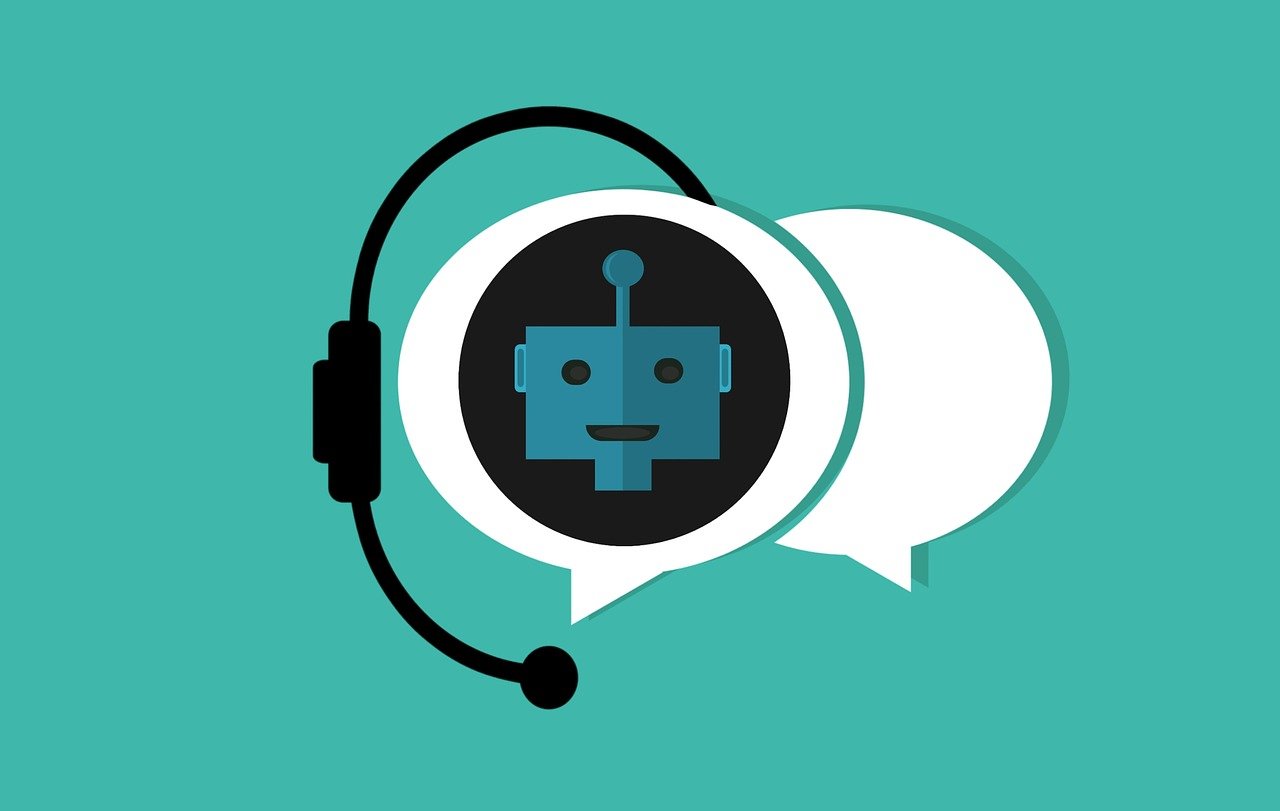While chatbots offer 24/7 support and save businesses $300,000 annually through automation, live chat increases conversions by 20% with the human touch customers crave. The most effective strategy combines both approaches for the perfect balance of efficiency and personalization.
Take a look at another great AI article here: https://amzoraltd.com/ai-content-generation-vs-human-copywriting-for-marketing/
Key Takeaways
Chatbots offer 24/7 availability and handle unlimited conversations, while live chat provides the human touch needed for complex issue resolution
Businesses using live chat report a 20% increase in website conversions, with 63% of customers more likely to purchase from websites offering this feature
Organizations implementing chatbots saved an average of $300,000 in 2019 through automation of repetitive tasks
A hybrid approach combining chatbots and live chat creates the most effective customer engagement strategy
Amzora Limited helps businesses implement optimal AI chat solutions that balance automation with personalized service
Why Your Business Needs AI-Powered Customer Engagement
Customer engagement has fundamentally changed. Today’s consumers expect instant, personalized responses at any hour of the day. AI-powered chat tools have transformed how companies connect with their audiences, regardless of business size.
When implemented correctly, AI chat solutions can dramatically improve your conversion rates while reducing operational costs. Amzora Limited specializes in helping businesses find the perfect balance between automation and personalization for maximum impact.
But which solution fits your business? The answer depends on understanding the unique strengths of both chatbots and live chat systems. Here’s how each option works and where they excel in the customer engagement journey.
Chatbots: Delivering 24/7 Support at Scale
Chatbots have transformed customer support by providing round-the-clock assistance without human limitations. These AI-powered tools are always ready to engage with your customers.
1. Respond 5X Faster Than Human Agents
Speed matters in customer service. Research shows that chatbots respond to inquiries five times faster than human representatives. This rapid response time dramatically improves customer satisfaction, especially for simple queries that don’t require complex problem-solving.
When a potential customer visits your website at 3 AM with a basic question about your product, a chatbot can provide an immediate answer. This instant gratification keeps visitors engaged with your brand instead of bouncing to a competitor.
2. Save $300,000 Annually Through Automation
The financial benefits of chatbots are substantial. Organizations using chatbots saved an average of $300,000 in 2019 alone. This cost reduction comes from automating repetitive tasks that would otherwise require human attention.
Consider how many times your team answers the same questions about business hours, return policies, or product specifications. A well-designed chatbot handles these routine inquiries automatically, freeing your human agents to focus on more complex and high-value interactions.
3. Handle Unlimited Conversations Simultaneously
Unlike human agents who can typically manage 2-3 conversations at once, chatbots can handle unlimited concurrent interactions. This scalability means your business never misses an opportunity to engage, even during peak traffic periods or unexpected surges.
Imagine a flash sale that drives thousands of visitors to your website at once. While your live chat team would be overwhelmed, chatbots maintain consistent response times regardless of volume. This ensures every customer receives attention when interest in your products is at its highest.
4. Generate and Qualify Leads Automatically
Modern chatbots do more than just answer questions—they actively generate and qualify leads. By asking strategic questions, they collect valuable customer information and gauge interest levels before any human intervention is needed.
For example, a chatbot on a real estate website might ask visitors about their budget, preferred neighborhoods, and timeline for buying. This information is then organized and prioritized, allowing sales teams to focus on the most promising prospects first.
Live Chat: Building Customer Relationships That Convert
While chatbots excel at automation and scale, live chat brings the irreplaceable human element to digital customer engagement. Live chat connects your customers with real people who can understand context, show empathy, and solve complex problems that AI might struggle with.
1. Boost Website Conversions by 20%
The numbers don’t lie—businesses using live chat report a 20% increase in website conversions. When visitors can get immediate answers from real people, their confidence in making a purchase grows substantially. This direct human connection creates trust that automated systems simply cannot replicate.
For example, when a customer is wavering between two similar products, a live chat agent can ask probing questions about their specific needs, provide personal recommendations, and address hesitations in real-time. This personalized guidance often makes the difference between abandonment and conversion.
2. Increase Purchase Likelihood by 63%
An impressive 63% of customers are more likely to make a purchase from websites that offer live chat support. This statistic alone makes a compelling case for implementing live chat as part of your customer engagement strategy.
Why such a dramatic impact? Live chat creates opportunities for relationship building during critical decision points. When customers feel supported by knowledgeable humans who genuinely want to help, their buying confidence increases significantly.
3. Resolve Complex Issues With Human Empathy
Some customer issues require nuance, understanding, and creative problem-solving—areas where human agents truly shine. While chatbots excel with straightforward questions, live chat agents can navigate the grey areas that inevitably arise in customer service.
Consider scenarios involving multiple products, unique use cases, or emotional components. A customer frustrated with a technical issue doesn’t just want a solution—they want acknowledgment of their frustration. Live chat agents can provide both technical help and emotional support, turning potentially negative experiences into positive ones.
4. Create Personalized Upselling Opportunities
Live chat isn’t just about solving problems—it’s about discovering opportunities. Skilled agents can identify needs customers didn’t even know they had, suggesting complementary products or services at just the right moment.
For instance, a customer buying a camera might benefit from a protection plan, extra lenses, or a carrying case. Live chat agents can naturally weave these suggestions into the conversation based on the specific needs revealed during the interaction. This personalized approach to upselling feels helpful rather than pushy, leading to larger cart values and higher customer satisfaction.
The Hybrid Approach: Combining Forces for Maximum Impact
The most effective customer engagement strategies don’t choose between chatbots and live chat—they use both in a coordinated system. This hybrid approach maximizes efficiency while ensuring no customer falls through the cracks.
1. Design Seamless Chatbot-to-Human Handoffs
The key to a successful hybrid approach lies in the handoff between automated chatbots and human agents. When designed correctly, this transition should feel natural and helpful rather than frustrating.
Start by programming your chatbot to recognize when a query exceeds its capabilities. Clear trigger points might include:
- Multiple repeated questions from the same user
- Detection of frustrated language or sentiment
- Specific complex topics the bot isn’t trained to handle
- Direct customer requests to speak with a human
Once triggered, the chatbot should smoothly transfer the conversation to a live agent while providing all relevant context collected during the initial interaction. This seamless handoff ensures the customer doesn’t need to repeat information, creating a continuous experience that respects their time and patience.
2. Measure Performance With Conversion Metrics
To optimize your hybrid approach, you need clear metrics that measure both efficiency and effectiveness. Key performance indicators should include:
- First response time for both chatbots and human agents
- Resolution rate and time to resolution
- Customer satisfaction scores for bot and human interactions
- Conversion rate from chat to sale
- Chat abandonment rate at different stages
- Chatbot containment rate (percentage of inquiries fully resolved by the bot)
By tracking these metrics, you can continuously refine when chatbots handle inquiries versus when human agents step in. This data-driven approach ensures you’re maximizing both cost efficiency and customer satisfaction.
3. Follow Proven Implementation Strategies
Successful implementation of a hybrid chat system requires thoughtful planning and execution. Start by mapping your customer journey to identify the most critical touchpoints where chat support would add value.
Next, determine which types of inquiries are best suited for chatbots versus live agents. Common questions with straightforward answers are perfect for automation, while complex or sensitive issues should be routed to humans.
Finally, invest in training for your live chat team. They need to understand not just how to use the technology, but how to maximize the hand-off from chatbots. The best agents know how to quickly review the automated conversation history and seamlessly continue where the chatbot left off.
Implementation Strategies for Any Business Size
Whether you’re a small startup or an enterprise organization, implementing AI chat solutions can be tailored to fit your specific needs and resources.
For small businesses with limited resources, start with a simple chatbot that handles your most common customer questions. This allows you to provide 24/7 support without hiring additional staff. As your business grows, you can add live chat during peak hours and gradually expand coverage.
Mid-sized companies can implement a more robust hybrid approach, using chatbots for initial engagement and qualification, while maintaining a small team of live chat agents for complex issues. This balanced approach maximizes efficiency while still providing the human touch when needed most.
Enterprise organizations can use advanced AI solutions that integrate with existing CRM systems and customer data platforms. This integration allows for highly personalized interactions across multiple touchpoints and channels, creating a seamless experience that drives loyalty and lifetime value.
Transform Your Customer Experience Today
The digital transformation of customer engagement is no longer optional—it’s essential for businesses that want to remain competitive. As we’ve seen, both chatbots and live chat offer distinct advantages that can dramatically improve how you connect with customers.
Selecting the Right Solution for Your Business Needs
When choosing between chatbots and live chat—or determining how to blend them—consider these key factors:
- Business Size and Resources: Smaller businesses with limited staff might benefit most from chatbots that provide 24/7 coverage without additional personnel. Larger enterprises might implement a full hybrid approach with dedicated live chat teams supported by AI.
- Customer Expectations: Consider your audience and their preferences. Younger demographics often prefer self-service options, while some industries (like luxury retail or financial services) may demand more personal interaction.
- Complexity of Products/Services: The more complex your offerings, the more you’ll likely need human agents to explain nuances and help with decision-making.
- Sales Cycle: For shorter sales cycles with straightforward products, chatbots may be sufficient. Longer, more consultative sales processes often benefit from the relationship-building capabilities of live chat.
Implementation Best Practices
Regardless of which approach you choose, these implementation tips will help ensure success:
- Start Small and Scale: Begin with addressing the most common customer questions and interactions, then expand functionality based on data and feedback.
- Personalize Where Possible: Even automated chatbots should reference customer names and history when available.
- Train Continuously: Both AI systems and human agents need ongoing training to improve their effectiveness.
- Gather Feedback: Regularly collect customer opinions about their chat experiences to identify improvement opportunities.
- Monitor Analytics: Use data to understand which approaches are working best and refine your strategy accordingly.
The Power of Balance
The most successful customer engagement strategies find the right balance between automation and human interaction. This balance will be different for every business, depending on your specific goals, resources, and customer expectations.
Implementing chat technology isn’t a one-time event—it’s an ongoing process of refinement and optimization. As your business grows and customer needs evolve, your approach should adapt accordingly.
Many businesses start with a chatbot to handle common questions and provide after-hours support, then add live chat capabilities as they scale. Others begin with live chat during business hours and gradually introduce automated elements to extend their reach.
Making the Decision: Next Steps
Ready to transform your customer engagement strategy? Here’s how to get started:
- Assess Your Current Situation: Identify pain points in your existing customer communication channels.
- Define Clear Goals: Determine what you want to achieve—whether it’s extending support hours, improving response times, increasing conversions, or reducing support costs.
- Evaluate Providers: Research solutions that align with your needs, budget, and technical capabilities.
- Plan for Integration: Consider how chat solutions will work with your existing systems, from CRM to e-commerce platforms.
By thoughtfully implementing chatbots, live chat, or a hybrid approach, you can create more meaningful connections with your customers while improving operational efficiency. The result? Higher satisfaction, increased loyalty, and ultimately, better business outcomes.
Conclusion
The choice between chatbots and live chat isn’t really a choice at all—it’s about finding the right mix to meet your business goals and customer expectations. Chatbots provide round-the-clock support, handle unlimited conversations, and significantly reduce operational costs. Live chat offers the human touch that builds relationships, resolves complex issues, and creates personalized upselling opportunities.
The most successful businesses don’t see these as competing technologies but as complementary tools in their customer engagement arsenal. By strategically implementing both, you create a seamless experience that satisfies customers at every stage of their journey.
In today’s digital-first world, exceptional customer engagement isn’t optional—it’s essential for growth. The right chat strategy puts powerful tools at your fingertips to meet and exceed customer expectations at every touchpoint.
Amzora Limited specializes in developing customized AI chat solutions that balance automation with the human touch for optimal customer engagement and business growth.



Pingback: Voice AI vs Text Chatbot Marketing for Customer Service - Content Marketing Agent